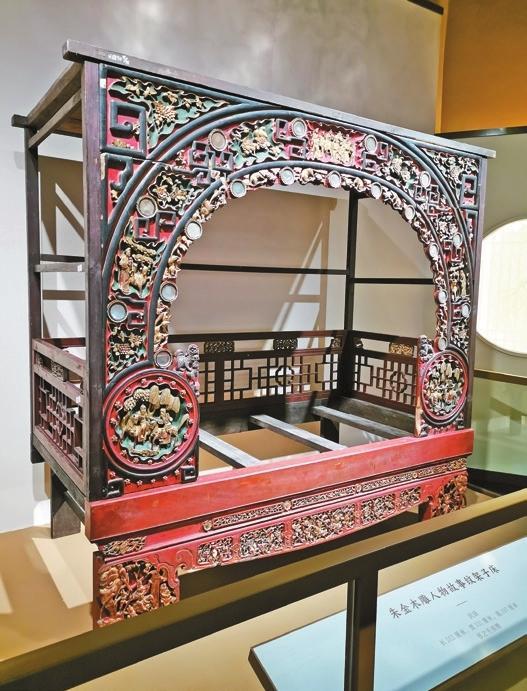
A visitor takes photos of a Qing Dynasty babu bed at Shenzhen Museum's Ancient Art Division.

A jiazi bed from the first half of the 20th century.

A luohan bed from the first half of the 20th century.

A decorative installation is on display with a Qing Dynasty jiazi bed.

A pair of decorations with exquisite carvings.

A Jin Dynasty (1115-1234) porcelain pillow.

A visitor takes photos of bed decorations. Photos by Cao Zhen
Having a good night's sleep marks one of the key aspects of modern people's healthy lifestyle, as it did for ancient people. Meanwhile, in Chinese history, beds also held a cultural significance beyond merely providing a sleeping experience.
A new exhibition at the Ancient Art Division of the Shenzhen Museum showcases over 100 beds, porcelain pillows, and bed decorations dating from the Qing Dynasty (1644-1911) to the first half of the 20th century. The exhibits, drawn from the museum's extensive collection, include 34 beds contributed by Shenzhen resident Zhang Zhixian. The elaborate decorations, dazzling carvings, and unique mortise-and-tenon wooden structures featured on these beds offer a glimpse into the rich tapestry of traditional Chinese culture.
Visitors to the exhibition can marvel at various types of beds on display. Some luohan beds, or couch beds, are carved with poems, adorned with marbles and gold, and served as both a seating area for meeting guests and a cozy spot for a nap. Often found in scholars' studios, garden pavilions, and reception halls, these beds exude elegance and artistic flair.
The jiazi beds, or canopy beds with four or six posts, in the Shenzhen Museum's collection, are from Guangdong, Fujian, Zhejiang, and Anhui provinces. These beds feature exquisite carvings and canopies that elegantly drape over them, allowing for different styles of beautiful curtains to hang from above.
The babu beds, or alcove beds, representing some of the most luxurious and sophisticated examples of traditional Chinese furniture. Characterized by their substantial and ornate frames resembling a small room, these beds often house a canopy bed and accompanying furniture within. Used in wealthy and influential families, babu beds were celebrated for their grandeur, elaborate craftsmanship, and unique privacy features.
The intricate carvings adorning these beds depict scenes from classic folk tales, auspicious animals, and flowers, reflecting the ancient Chinese people's aspirations for happiness, prosperity, longevity, and success. Through exploring the exhibition, visitors can delve into the fascinating evolution of bed designs throughout history and gain a deeper understanding of the customs, aesthetics, and enduring Chinese cultural heritage.
In conjunction with the exhibition, the Shenzhen Museum will host lectures and workshops focusing on traditional Chinese mortise-and-tenon wooden structure techniques and other crafting art. Those interested can stay informed and sign up for these events by following the Shenzhen Museum's official WeChat account (ID: iszbwg).
Dates: Through Nov. 24
Venue: Shenzhen Museum's Ancient Art Division, Futian District
Metro: Line 9 to Hongling South Station, Exit A



